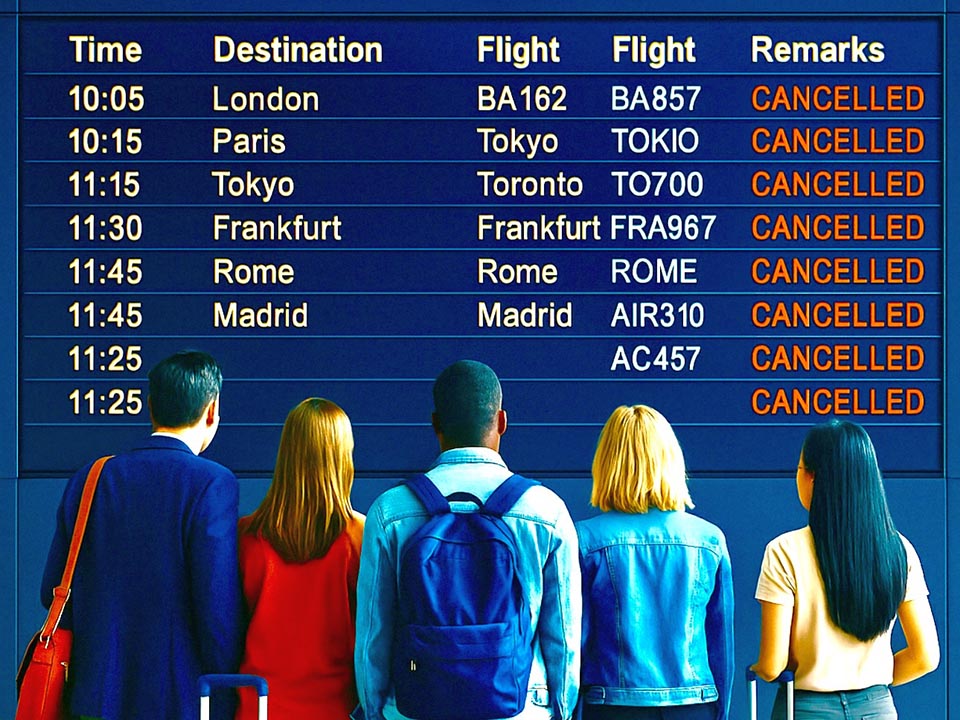
A new kind of travel disruption is sweeping across the globe—not from natural disasters or pandemics, but from the corridors of power where trade policies are being rewritten. As governments across North America, Europe, and Asia harden their economic stances with reciprocal tariffs and tighter visa regimes, the global tourism industry is feeling the shockwaves. Travellers from Canada to France, and Mexico to China, are rethinking their plans in response to rising costs, geopolitical uncertainty, and fluctuating exchange rates.
Asia-Pacific: Navigating Choppy Waters
In the Asia-Pacific region, the escalating US–China trade war has cast a long shadow over tourism dynamics. China, as the world’s leading source of outbound tourists, has seen a notable shift in travel patterns. In 2023, Chinese households made 101 million cross-border trips—equating to 60% of 2019 levels. Notably, over 70% of these trips were to Hong Kong, Macau, and Taiwan, indicating a hesitancy to venture further afield. This reluctance is attributed to economic uncertainties and global tensions which have made long-haul travel less appealing.
The depreciation of the Chinese yuan, coupled with high inflation in destination countries, has further inflated travel costs. Additionally, complex visa application processes, exacerbated by strained international relations, have deterred Chinese travellers from exploring destinations beyond Greater China.
Japan: Adjusting Expectations
Japan, a favoured destination for Chinese tourists, has felt the ripple effects of these changing travel behaviours. While the Japanese government had ambitious targets to double foreign visitors by 2020, the decline in Chinese tourists has necessitated a recalibration of expectations. Efforts to relax visa requirements and promote cultural tourism continue, but the broader geopolitical climate poses challenges to achieving pre-pandemic tourism levels.
Australia: Economic Crosswinds
Australia’s tourism sector has not been immune to the global trade tumult. The nation’s heavy reliance on Chinese visitors has become a vulnerability amid escalating trade tensions. Analysts warn that a significant reduction in trade with China could impact living standards for Australians.
The Australian stock market has also felt the strain. The S&P/ASX 200 index recently shed over A$40 billion in value, with sectors closely tied to global commodity demand—such as mining and energy—experiencing significant losses. This financial volatility has implications for consumer confidence and discretionary spending, including domestic and international travel.

Global Ripples: A United States Perspective
The United States, traditionally a magnet for international tourists, is witnessing a downturn in arrivals. International tourism to the US experienced an 11.6% decline in March 2025 compared with the previous year. Factors contributing to this trend include global disapproval of US policies and rhetoric, with significant drops in bookings from countries such as Canada, Sweden, Germany, and China.
The age of spontaneous jet-setting might be taking a sabbatical—at least in the United States. As the global economic environment grows increasingly unsettled, American travellers are rethinking their plans, trading passport stamps for road maps and choosing domestic getaways over overseas adventures. This shift, fuelled by politics and a rising tide of protectionist policies, has sent ripples across the international travel landscape—and tourism insiders are watching closely.
At the heart of the matter lies the American government’s aggressive reshaping of trade relations. The White House’s recalibration of tariffs and visa policies has had knock-on effects for both inbound and outbound travel. Executive orders on enhanced visa screenings, alongside the implementation of reciprocal tariffs, have resulted in what industry experts are calling a “hesitation effect” among both American travellers and international visitors.
It’s no longer just about airfares or hotel rates, but a deeper concern that America is globally less popular than it was prior to Trump’s “America First” trade war. American travellers are now asking, “Are we not welcome abroad?” or “Is this going to be worth it with my investment portfolio down?” That’s changing the way people plan.
USA Numbers Tell the Story
The statistics are stark. A recent survey by travel research firm MMGY Global revealed that more than a third of 1,000 US respondents are leaning towards domestic travel this year. This isn’t just about convenience—it’s about cost, confidence, and control. “We’re seeing a pronounced pivot to the backyard,” said one analyst from MMGY. “People want to travel, but they also want predictability.”
The USA’s domestic travel surge is already visible in forward bookings, and traditional international gateways are feeling the pinch. Canadian bookings to the US are down a dramatic 70% year-on-year, according to OAG Aviation Worldwide. United Airlines has responded by cutting cross-border routes, while Air France has slashed fares to prop up sagging demand.
The impact isn’t confined to airlines. Making Americans refocus their travels domestically won’t exactly make the US travel industry great again. The economic turmoil around the “reciprocal tariffs” we’ve read about all week is not only making it harder for Americans to commit to trips abroad—it’s also making it harder for foreigners to access the country. Hotel chains and tourism boards across the United States are watching European booking rates plummet. French hospitality giant Accor SA reports a 25% decline in US-bound travel from Europe this summer—a downturn expected to cost the industry some $8.9 billion in lost visitor spending.
On the West Coast, where Canadian snowbirds typically flock during the winter months, hotels are plastering signs proclaiming “Palm Springs loves Canada” in a bid to woo back lost business.
WTTC: Looking Ahead – Resilience Amidst Uncertainty
Despite these challenges, industry leaders remain cautiously optimistic. Julia Simpson, head of the World Travel & Tourism Council, emphasises that tourism has historically rebounded from crises, asserting that while tariffs may cause short-term disruptions, travel demand possesses a robust capacity for recovery.
In the interim, travellers and industry stakeholders alike must navigate this complex landscape, adapting to the evolving interplay of economics and geopolitics that continues to reshape the world’s travel map.

About the Author:
Andrew J. Wood is a seasoned travel writer, tourism consultant, and former hotelier with over 40 years of experience in the global hospitality industry. A British national based in Asia, he has held senior management roles with some of the world’s leading hotel brands and is a respected voice in travel journalism. A passionate advocate for sustainable tourism and cultural exchange, Andrew frequently contributes to international publications and speaks at travel conferences worldwide. His insights draw on a deep understanding of industry trends, geopolitical influences, and the evolving dynamics of global travel.










